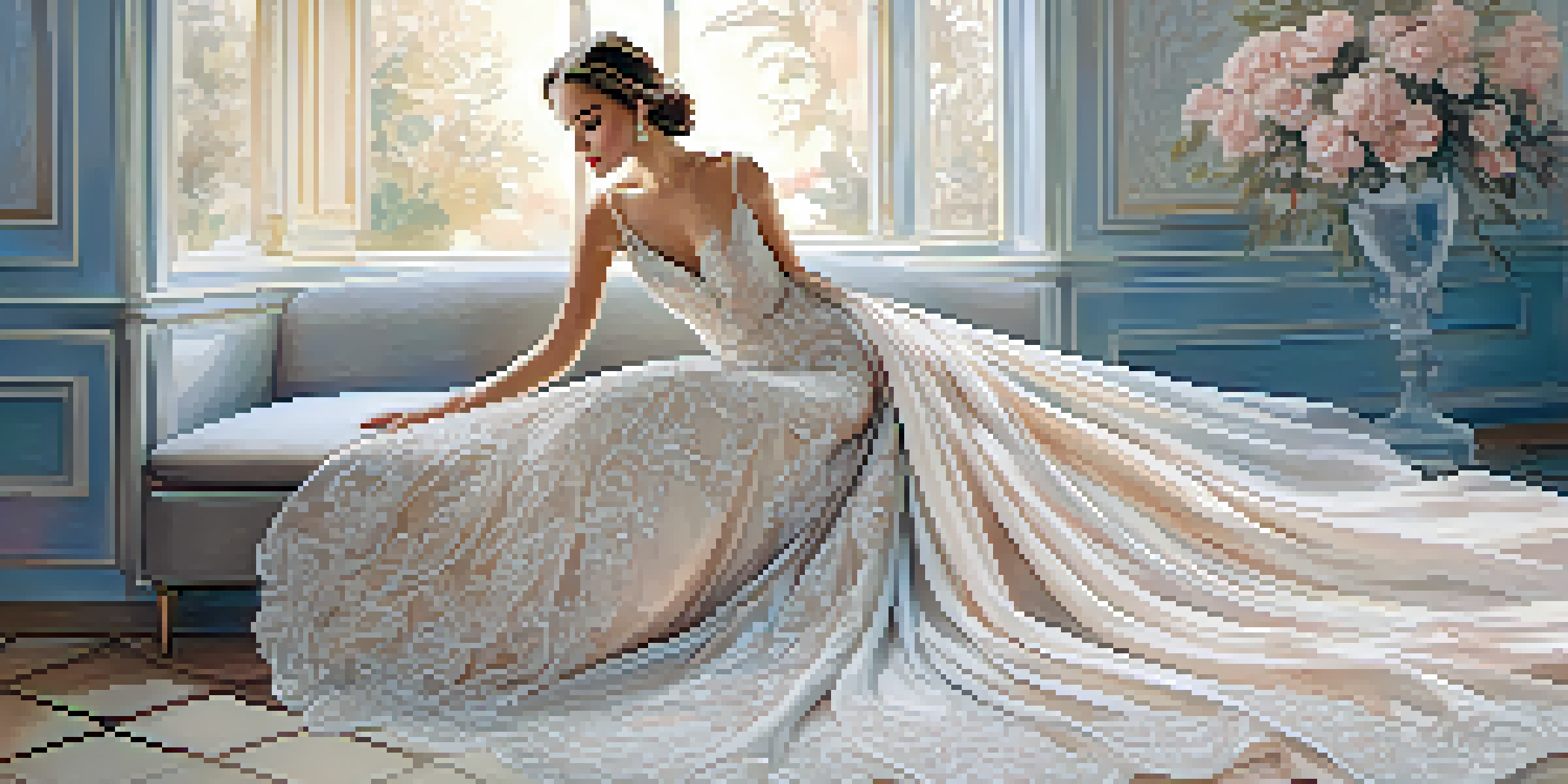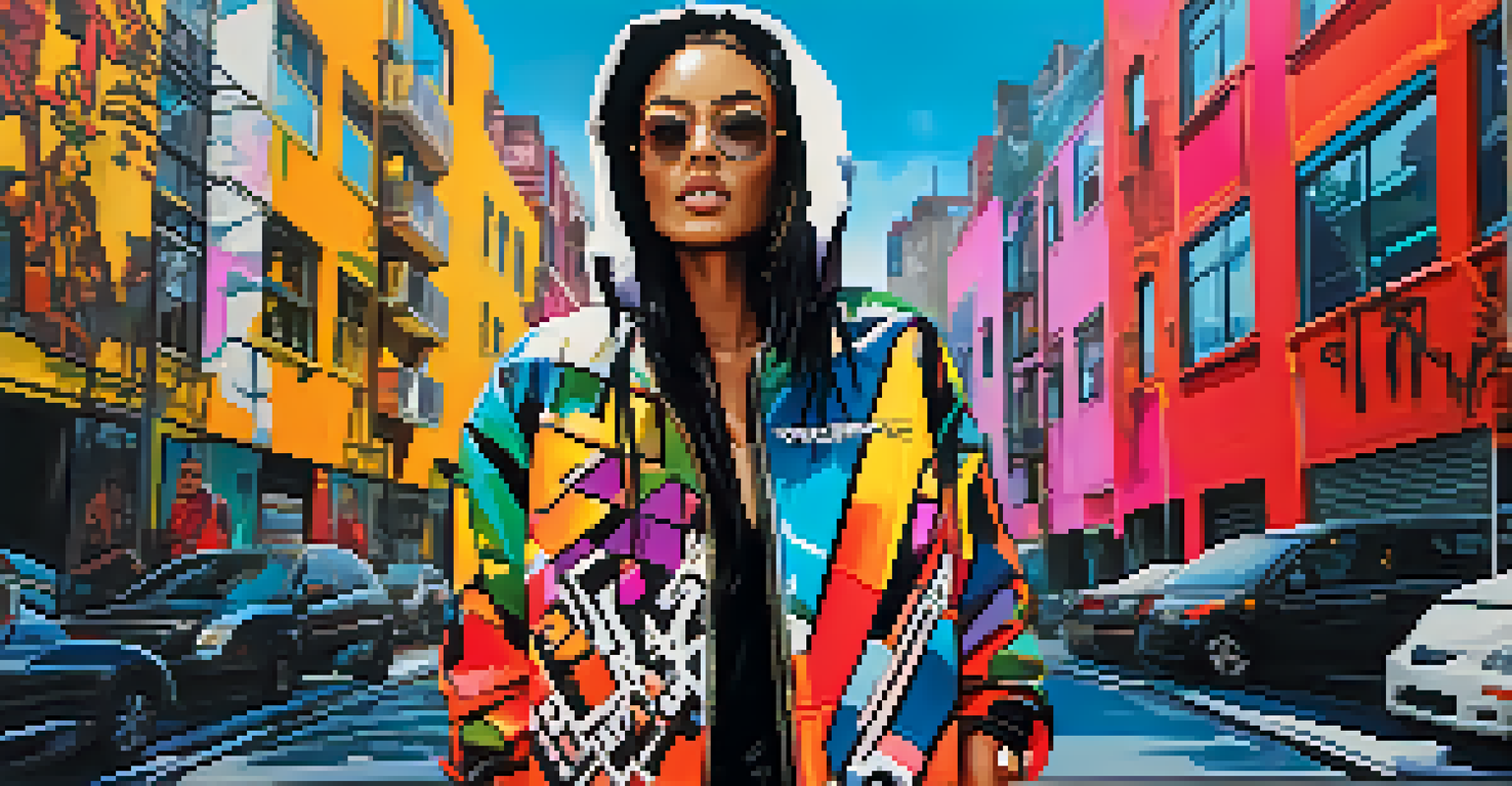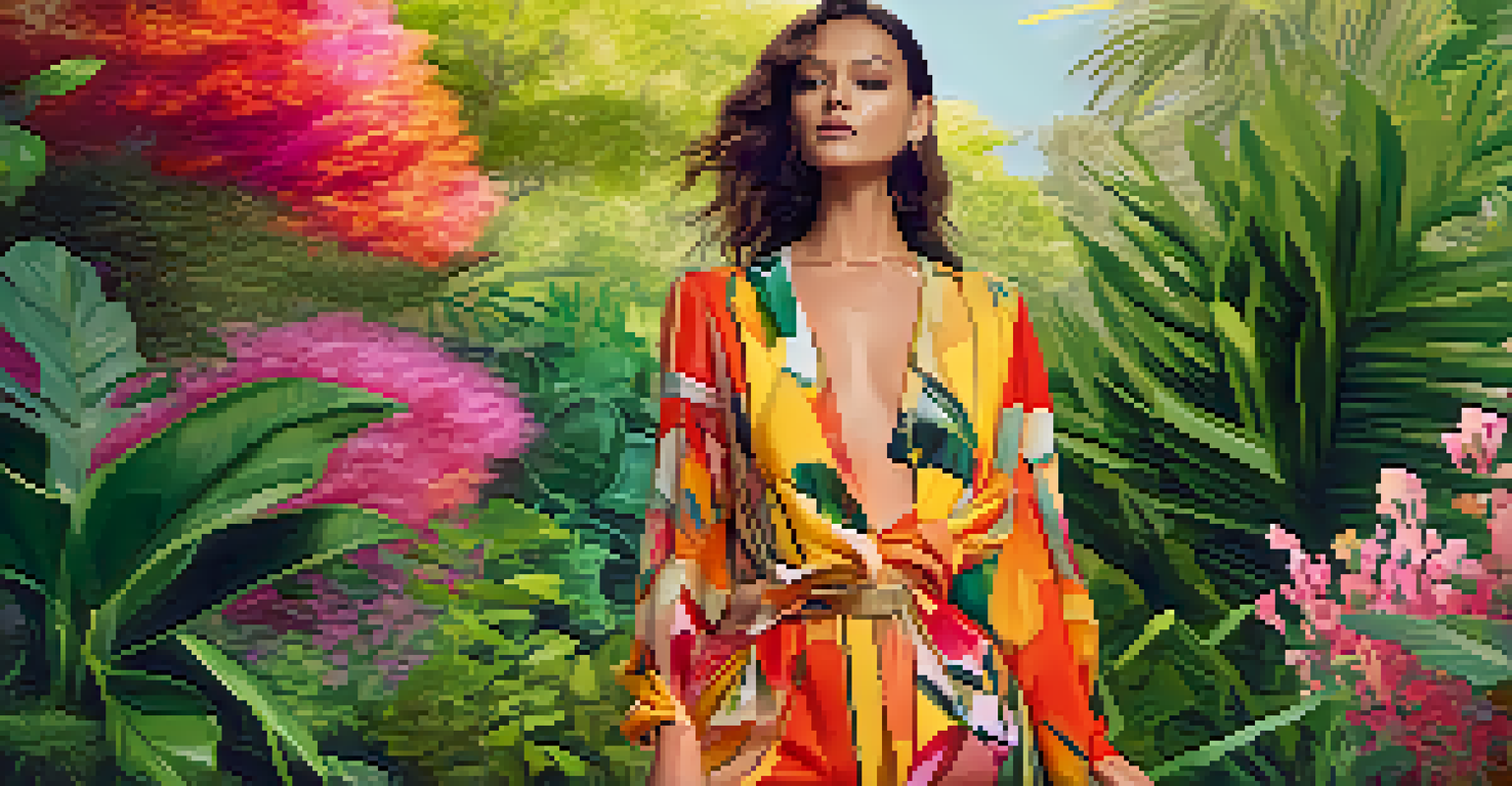Fashion Illustration Styles: A Diverse Artistic Landscape

Understanding Fashion Illustration and Its Importance
Fashion illustration is a unique blend of art and fashion, serving as a visual narrative for designers and brands. It captures the essence of garments, trends, and styles, often conveying more than a photograph can. This artistic form not only showcases clothing but also tells a story about culture, identity, and creativity.
Fashion is the armor to survive the reality of everyday life.
Historically, fashion illustration has played a crucial role in how fashion was marketed and perceived. Before the rise of photography, illustrations were the primary medium through which designers could communicate their visions. Today, while photography dominates, illustrations continue to offer a fresh perspective and emotional connection.
Moreover, fashion illustration has evolved with technology, incorporating digital tools that allow artists to experiment with colors, textures, and styles. This evolution has opened up new avenues for creativity, making fashion illustration a vital component in modern fashion marketing strategies.
Classic Fashion Illustration: Timeless Elegance
Classic fashion illustration harks back to the golden age of fashion, characterized by elegant lines and graceful poses. Artists like Erté and René Gruau exemplified this style, using fluid lines and exaggerated proportions to convey sophistication. Their works often reflect the glamour of the eras they represent, transporting viewers to a world of high fashion.

These illustrations typically focus on the details of garments, capturing the fluidity of fabrics and the intricacies of design. The use of watercolor and ink lends a softness to the images, creating a dreamlike quality that resonates with fashion enthusiasts. Classic styles often evoke nostalgia, reminding us of fashion's rich history.
Fashion Illustration's Unique Role
Fashion illustration serves as a powerful visual narrative, conveying culture and creativity beyond what photography can capture.
Moreover, classic fashion illustration serves as a foundation for modern techniques, influencing present-day artists. By studying these timeless styles, contemporary illustrators can learn the art of balance and proportion, ensuring their work retains a sense of elegance.
Contemporary Fashion Illustration: Bold and Dynamic
Contemporary fashion illustration reflects the ever-changing landscape of fashion with its bold colors and dynamic compositions. Artists today often blend various techniques, from digital painting to mixed media, creating vibrant, eye-catching visuals. This style embraces the eclectic nature of modern fashion, celebrating diversity and innovation.
Fashion is about dreaming and making other people dream.
In this realm, the emphasis is on personal expression, allowing artists to inject their unique voice into their work. Illustrators like David Downton and Holly Nichols have gained recognition for their distinctive styles, each bringing a fresh perspective to fashion. Their illustrations challenge conventions, pushing the boundaries of what fashion art can be.
As a result, contemporary fashion illustrations often resonate with younger audiences, who value individuality and creativity. This connection to current trends makes them a powerful tool for fashion brands aiming to engage with a modern consumer base.
Digital Fashion Illustration: The Rise of Technology
The advent of digital technology has transformed the world of fashion illustration, providing artists with new tools and platforms. Digital illustration allows for greater flexibility and experimentation, enabling artists to create intricate designs with ease. Programs like Adobe Illustrator and Procreate have become staples in the toolkit of modern illustrators.
This shift has also democratized fashion illustration, allowing aspiring artists to share their work on social media platforms. Instagram and Pinterest have become virtual galleries, showcasing a wide range of styles and talents. This visibility helps emerging artists build a following and connect with potential clients in ways that were previously unimaginable.
Evolution with Digital Tools
The rise of digital technology has transformed fashion illustration, allowing for greater creativity and accessibility in the art form.
Furthermore, digital fashion illustrations can easily be adapted for various mediums, from print to online marketing. This versatility ensures that brands can utilize illustrations across different platforms, maximizing their reach and impact in the fashion industry.
Fashion Illustration for Streetwear: Edgy and Urban
Streetwear fashion illustration embodies the spirit of urban culture, often characterized by bold graphics and a rebellious attitude. This style reflects the influence of skate and hip-hop culture, showcasing designs that resonate with a youthful audience. Illustrators in this niche often adopt a more relaxed and gritty aesthetic, capturing the essence of street style.
Artists like Rachael Sarra and Karan Singh have made their mark by blending street art influences with fashion illustration. Their work often features vibrant colors, graffiti-like elements, and a playful approach to design. This fusion creates an energetic vibe that appeals to the contemporary fashion landscape.
Moreover, streetwear fashion illustration emphasizes the importance of inclusivity and representation within the fashion industry. By drawing inspiration from diverse cultures and experiences, these artists contribute to a broader narrative that celebrates individuality and community.
The Role of Fashion Illustration in Branding
Fashion illustration plays a pivotal role in branding, serving as a visual identity for fashion labels. By creating unique illustrations, brands can differentiate themselves in a saturated market, making a lasting impression on consumers. This artistic approach allows brands to communicate their values and aesthetics in a compelling manner.
Illustrators often collaborate with fashion houses to produce bespoke artworks that align with a brand's vision. These illustrations can be utilized in advertising campaigns, lookbooks, and social media, enhancing the brand's narrative. This synergy between art and fashion creates a cohesive message that resonates with the target audience.
Inclusivity in Streetwear Art
Streetwear fashion illustration emphasizes inclusivity and representation, reflecting diverse cultures and appealing to a youthful audience.
Furthermore, the emotional connection that illustrations evoke can foster brand loyalty. When consumers resonate with a brand's artistic expression, they are more likely to engage and support that label, paving the way for long-term success in the competitive fashion industry.
The Future of Fashion Illustration: Emerging Trends
As the fashion industry evolves, so too does fashion illustration, with emerging trends shaping its future. One notable trend is the rise of sustainability, as artists increasingly use their platforms to advocate for eco-friendly practices. Illustrators are exploring ways to depict sustainable fashion, raising awareness about the impact of consumer choices.
Additionally, the integration of augmented reality (AR) and virtual reality (VR) into fashion illustration is on the horizon. These technologies offer exciting possibilities for interactive experiences, allowing viewers to engage with illustrations in new ways. This innovation could revolutionize how audiences perceive and interact with fashion art.

Moreover, as diversity and inclusion continue to be focal points in the fashion industry, fashion illustration will play a crucial role in representing varied narratives. By showcasing diverse models and styles, illustrators can contribute to a more inclusive vision of fashion that reflects the richness of global culture.